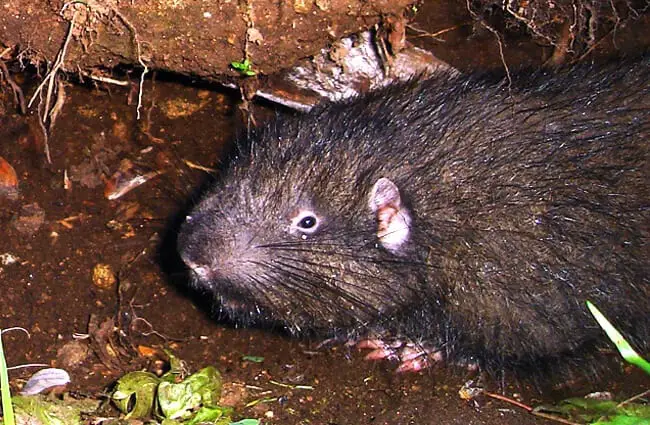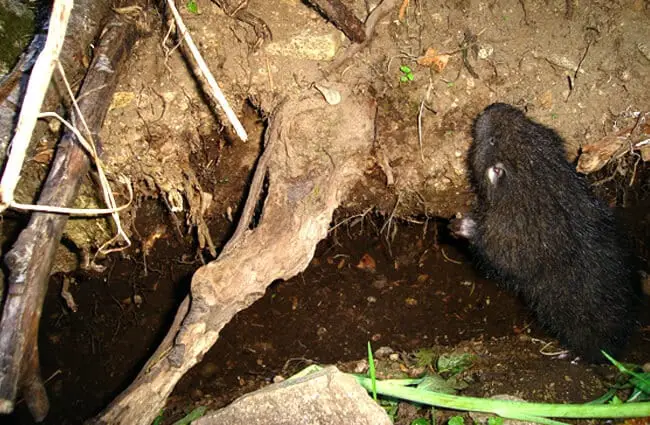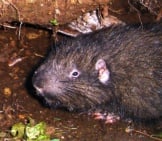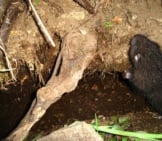The Fox Squirrel is the largest species of climbing squirrel in North America. Researchers place them in the taxonomic genus Sciurus. Their closest relatives include the gray squirrel, red squirrel, and more.
These rodents live in eastern North America, from southern Canada to northern Mexico. Read on to learn about the Fox Squirrel.
Description of the Fox Squirrel
This species looks much like your typical “squirrel” with its long bushy tail. The coat is buff brownish-gray, with orange undertones. It grows quite large, reaching lengths of up to two feet long, not including the tail! Particularly hefty individuals surpass two pounds or more in weight.
Interesting Facts About the Fox Squirrel
You can commonly find these rodents throughout the eastern United States, and into Canada and Mexico. So, what exactly makes this frequently spotted creature so unique? Learn more, below.
- Acorn Eater – While most people know that squirrels eat acorns, did you know that the populations in different regions rely on different species of trees? For example, the Illinois populations prefer the seeds of hickory trees for most of the fall season.
- Not So “Tree” Squirrel – These rodents rely heavily on trees, and frequently scurry up and down their trunks to flee predators. However, this species spends the vast majority of its foraging time on the ground looking for fallen nuts and acorns.
- Food Cache – When they find a surplus of food, these crafty creatures take the extra and hide it in underground caches. They bury extra nuts and acorns in multiple locations, then come back to eat them when food grows scarce.
- Tree Planting – Though their memories are quite good, they are not perfect. Because of this, they do not find every seed and acorn that they bury. Through forgetting extra food caches, these squirrels help continue the growth and development of the forest.
Habitat of the Fox Squirrel
These rodents thrive both in the trees and on the ground. They have impeccable climbing and jumping skills. Even though they spend much of their time on the ground, they rely on heavily wooded habitats. Some of the different ecosystems that they utilize include forests, woodlands, parks, gardens, and even suburbs.
Distribution of the Fox Squirrel
You can find this squirrel throughout much of eastern North America. The westernmost extent of their range stretches from southern Canada through northern Mexico. From there, they live throughout the mid and eastern United States to the coast.
Diet of the Fox Squirrel
Even though much of their diet consists of acorns and other seeds, these large rodents are omnivores. This means that they also eat meat. However, most of the carnivorous portion of their diet consists of insects and invertebrates.
The plants that they feed on include acorns, seeds, nuts, berries, fruits, and more. They also hunt moths, spiders, insect larvae, and other small invertebrates. On occasion, they feed on bird eggs, and even carrion.
Fox Squirrel and Human Interaction
Because this species often lives in suburban and urban areas, humans interact with them quite frequently. Though their population as a whole is stable, pockets in certain regions or subspecies face decline.
The IUCN lists the species as Least Concern, but acknowledges that they face decline of suitable habitat in some areas.
Domestication
Humans have not domesticated these rodents in any way.
Does the Fox Squirrel Make a Good Pet
No, this species does not make a good pet. Though it may look cute and cuddly, it is a wild animal and you should not keep it as a pet. Additionally, in many areas it is illegal for you to keep a squirrel as a pet.
Fox Squirrel Care
Some zoos keep these creatures in their collection or as ambassador animals. Even more frequently, these rodents live at the zoo and forage for scraps left behind by humans. A typical rodent diet works well for these mammals, as well as acorns, seeds, nuts, berries, and other fresh fruits and vegetables.
Behavior of the Fox Squirrel
This species is most active during the daytime, or diurnal. They are not particularly social towards one another. Individuals will fight when they cross paths. They use scent marking to establish and announce their home range. The only time these creatures interact is during the breeding season.
Reproduction of the Fox Squirrel
When the breeding season arrives, males fight with one another for breeding rights. Females choose the winners, though they often mate with more than one male. The gestation period lasts about 45 days, and a litter usually contains about 2 or 3 pups. These pups reach independence when they are about 3 months old.





![Red Angus Closeup of a beautiful Red Angus cowPhoto by: U.S. Department of Agriculture [pubic domain]https://creativecommons.org/licenses/by/2.0/](https://animals.net/wp-content/uploads/2020/03/Red-Angus-4-238x178.jpg)












![Red Angus Closeup of a beautiful Red Angus cowPhoto by: U.S. Department of Agriculture [pubic domain]https://creativecommons.org/licenses/by/2.0/](https://animals.net/wp-content/uploads/2020/03/Red-Angus-4-100x75.jpg)

